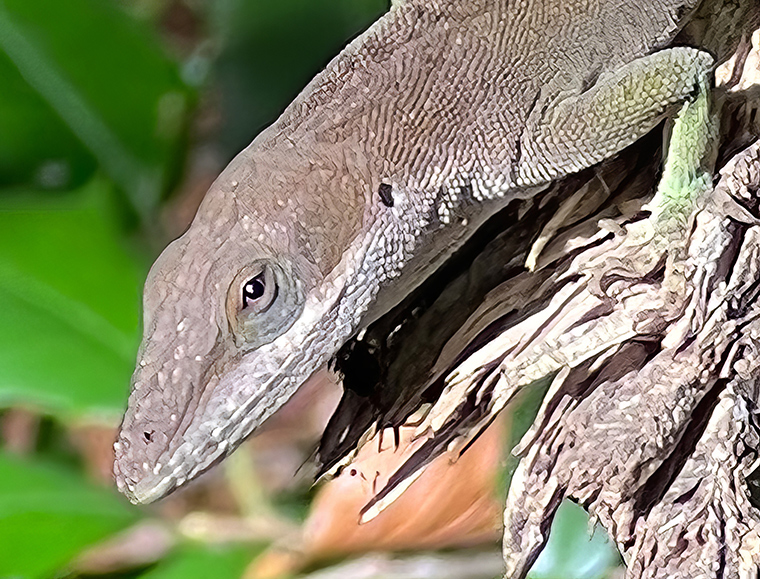As we continued along the boardwalk in Congaree National Park, we saw some other interesting things.
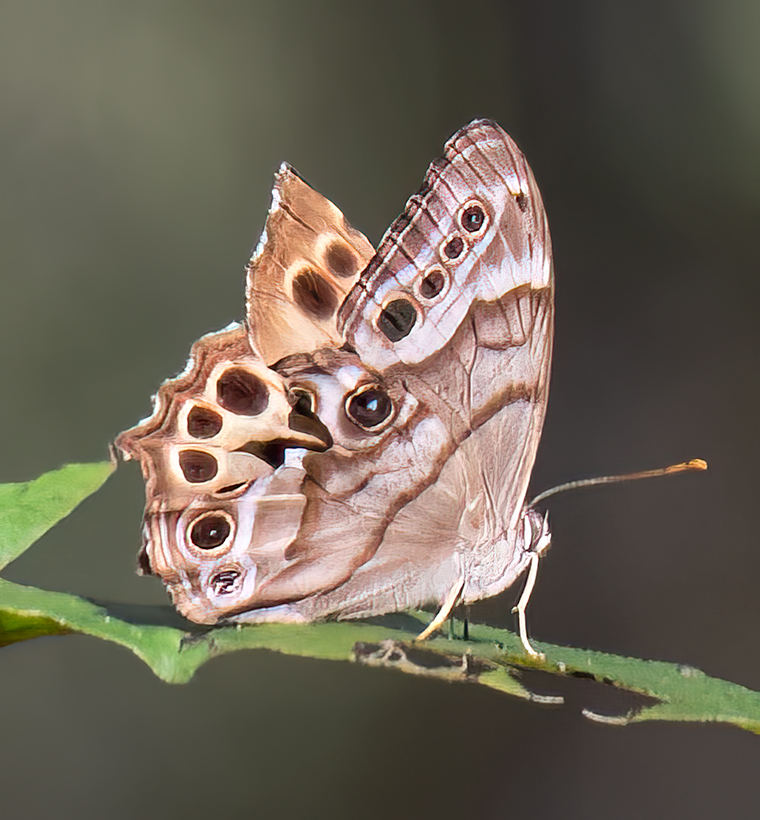
This butterfly has a notch missing from its right hindwing, possibly snipped out by a bird. It is a Southern Pearly-eye (Enodia portlandia). The yellow antennal clubs are a diagnostic feature. It is most commonly seen in Southeastern swamps and wetlands, which is precisely where we found it. Its larvae feed on Cane (Arundinaria sp.), the only native bamboo genus (three species are recognized ) of the United States. Adults feed on carrion, sap, rotting fruit or dung.
Canebrakes are thickets dominated by bamboos, and were much more widespread when Europeans arrived. A number of factors contributed to their distribution as fragmented patches today. One of those factors was overgrazing by livestock. Species such as the Pearly-eye, whose larvae are dependent on bamboos, are thus becoming increasingly in danger as canebrakes disappear.
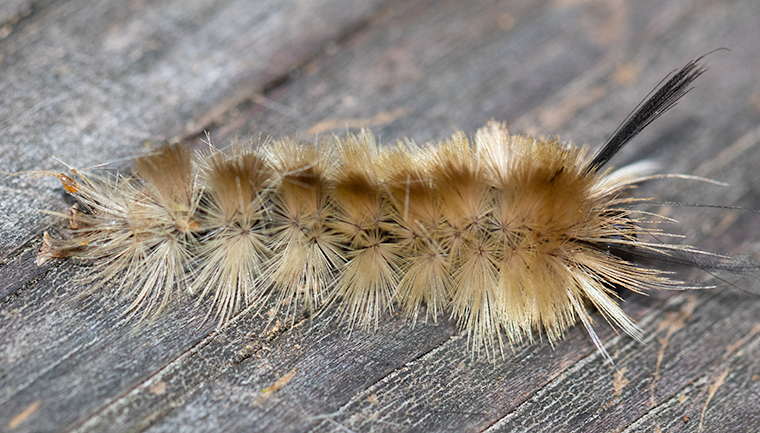
This interesting creature was enjoying the boardwalk as were we. It is the probably the caterpillar of a Tussock Moth.
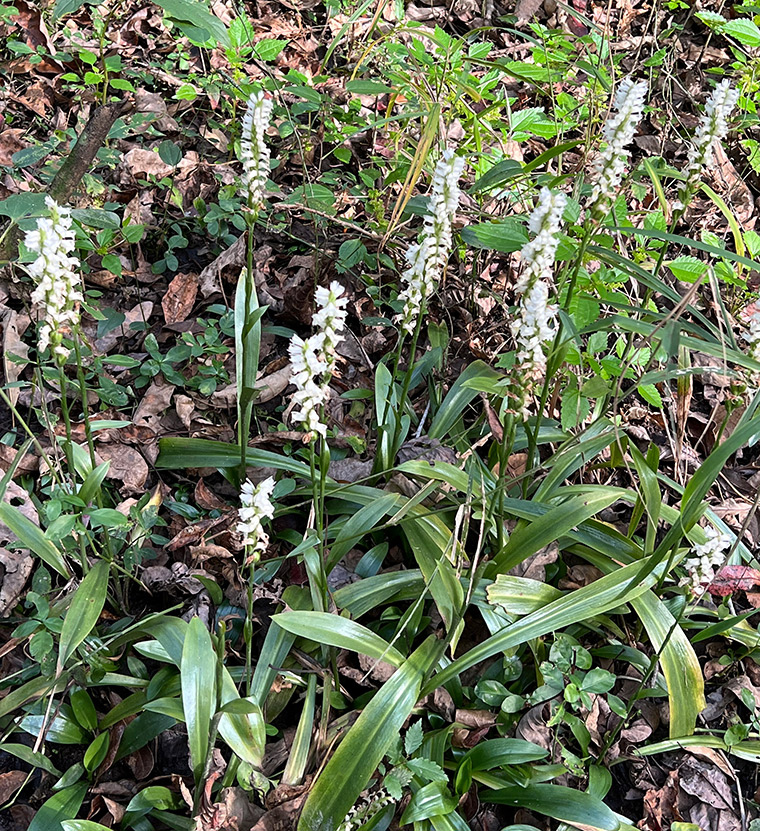
Right next to the boardwalk lots of orchids were growing. These are Nodding Lady’s Tresses (Spiranthes cernua). They are common in wet places and can be found in natural habitats such as this or growing in roadside ditches.
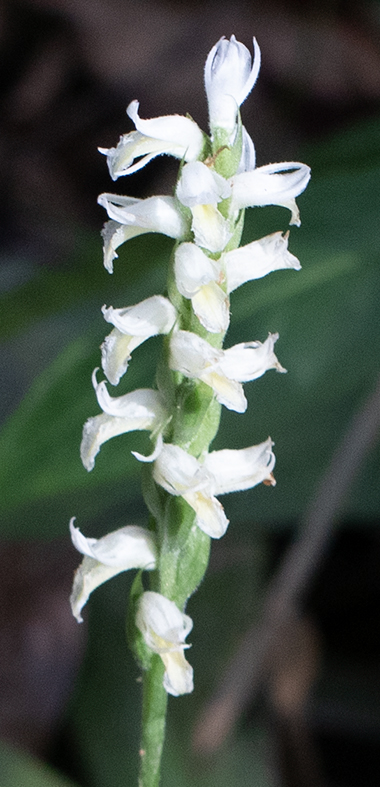
I could not get off the boardwalk to take a closeup photograph, and of course I could not pick one to take home. So this is the best I could do. The individual flowers are arranged in spiral fashion up the stem (hence the genus name “Spiranthes“), but that is difficult to make out in this photograph. The word “nodding” in the common name refers to the configuration of the individual flowers, where the base of the flower is higher than the tip. Thus the flower “nods”. This nodding aspect can be seen in the flower second from the bottom.
This lone wasp was resting on a tree trunk. I am pretty sure it is a species of Polistes, a paper wasp, but I am not sure of the species. This type of wasp creates the open This is, This lone wasp was resting on a tree trunk. I am pretty sure it is a species of Polistes, a paper wasp, but I am not sure of the species. This type of wasp creates the open This is, itoneycomb nest often found under eaves or on porch ceilings. Flipping through the pictures in my book “A Guide for Eaitoneycomb nest often found under eaves or on porch ceilings. Flipping through the pictures in my book “A Guide for Eastern North America: Wasps” by Heather Holm, I think it might be P. metricus. This late in the year (October) it may be a worker that is doomed, since all the workers die each fall. Or it could be a queen looking for a place to overwinter. Only queens survive to start a new colony next year.
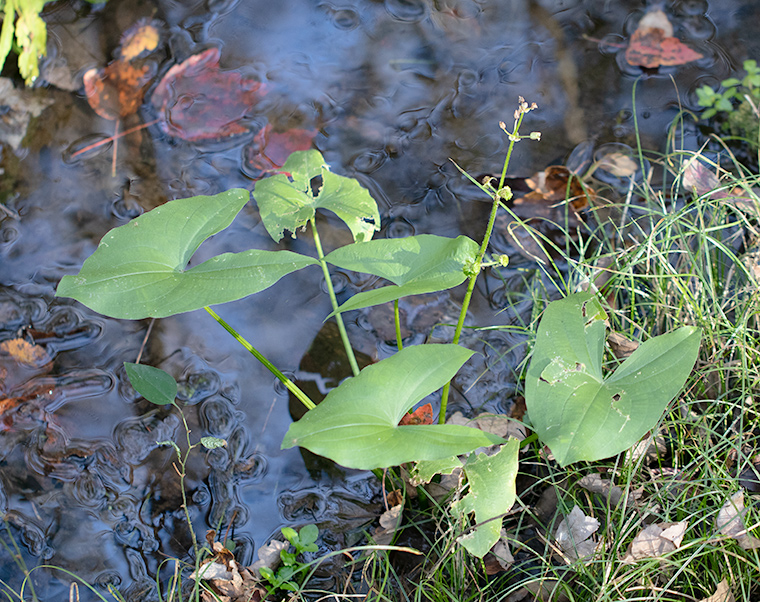
Here is a rather ragged clump of Sagittaria common name “Arrowhead”. It is sometimes called “Swamp Potato” because it has small tubers that can be harvested from the mud where it grows, boiled and eaten.
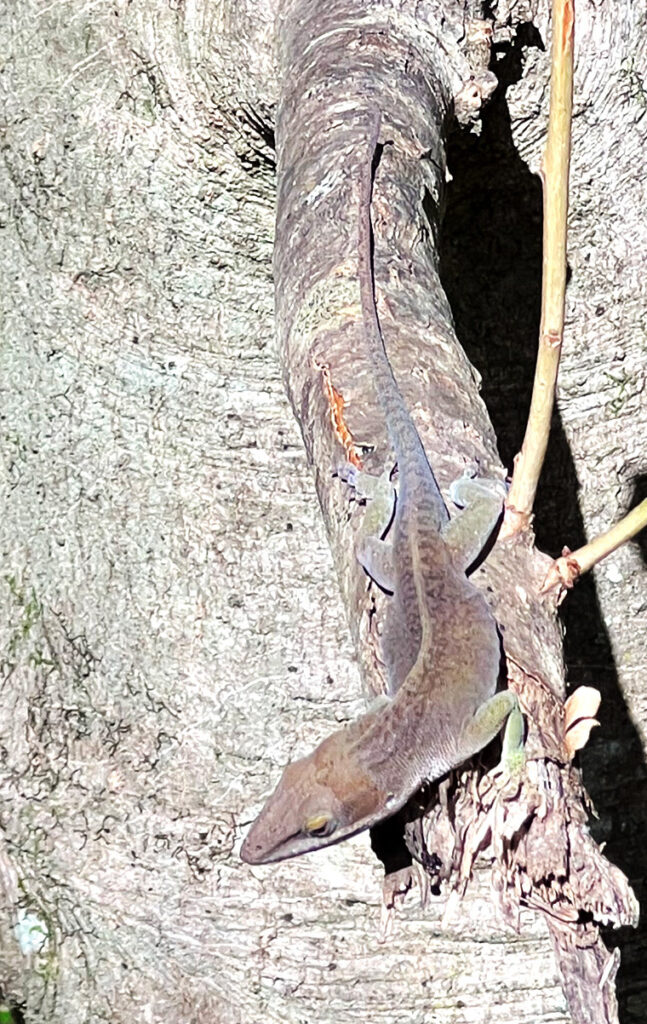
There were lots of Carolina Anoles (Anolis carolinensis around. This one eyed us suspiciously as we passed

To top it all off there was a nice sunset as we were leaving.
Discover more from A Naturalist's Journal
Subscribe to get the latest posts to your email.


